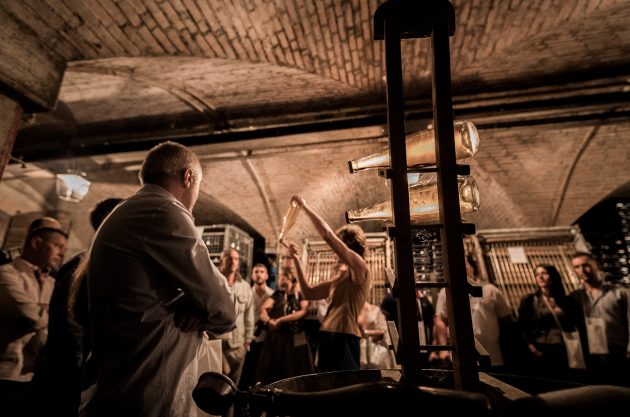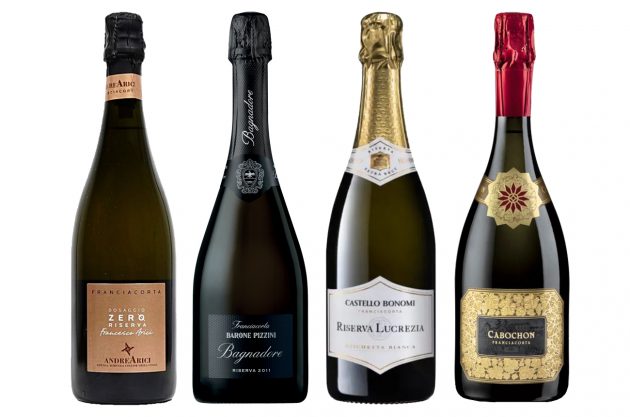Recent research sheds new light on the origins of Franciacorta. Arguably the most prestigious region for Italian sparkling wines made in the traditional (bottle-fermented) method, Franciacorta is considered as dynamic as it is young.
The reason why requires a deeper look at the development of the appellation in recent times. The growers’ Consortium was born in 1990 with 29 producers, but the production of Franciacorta started many years before.
The history of bottle-fermented Franciacorta
Franco Ziliani, the oenologist at the historic Guido Berlucchi winery, tells the story of how modern bottle-fermented Franciacorta began 60 years ago: ‘Count Guido Berlucchi summoned me, the company’s new young oenologist, to the drawing room, greeted me warmly and began to question me about how to improve his unstable white wine.’
‘I answered his questions without hesitation, and made a daring suggestion: what if we were to make a sparkling wine in the French style?’
The challenge was accepted, and the result was the beginning of traditional method sparkling wine in this part of Italy.

Franciacorta through the ages
Franciacorta has actually produced wine since the end of the 12th century. It is first mentioned in contemporary documents as a producer of sparkling wine in the 15th century when a certain Girolamo Conforti wrote about wines from the province of Brescia being classed as ‘mordace’ (literally ‘biting’, in Italian, and a synonym for sparkling, but with little similarity to today’s product).
A century later, a treatise on villa estate management, ‘Le dieci giornate della vera agricoltura e piaceri della villa,’ written by Agostino Gallo in 1654, references ‘cisiolo’, a kind of claret made from the off-skin vinification of red grapes to produce ‘vino mordace’. This was a relatively sweet sparkling wine able to ‘last longer and become better in the next year’.
Gallo listed the following grape varieties: Trebbiano, Schiava and the ‘late ripening Albamatte’ which could very well refer to today’s Erbamat, one of the varieties permitted in the blend of a Franciacorta.
Gabriele Archetti, Professor of Medieval History at the Cattolica University in Milan, believes Gallo’s description is the first credible reference to a forefather for modern Franciacorta, even if bottle-fermentation was yet to be invented. Archetti is currently researching Franciacorta wines even further back in the Renaissance period.
Meanwhile, today’s enthusiasts for the history of Franciacorta can visit the cellars at the Guido Berlucchi company to see the first 1961 vintage on display and ponder on the vertiginous development of the Franciacorta category.
The Consortium has grown: it now has 121 member wineries with 3,229ha of vineyards and sales of 15.6 million bottles in 2020, of which 10.9% went abroad.
Franciacorta wines to try:

Wines tasted and rated by Decanter contributor Aldo Fiordelli
Arici, Zero Millesimato Riserva, 2011 12.5%
Stunning complexity packs a punch in this 2011 vintage, one of the best of the past years in Franciacorta. Candied lemon with hints of Panettone; apple and buttery notes are followed by equally rich flavours of lemoncheese cake, zabaione and caramelized hazelnut – an assertive oxidative style. The tension is there: fine mousse is enhanced by crisp acidity and a good salty lemon finish. Complex, refined and ready to drink. 94
Barone Pizzini, Bagnadore Riserva Pas Dosé, 2011 12%
Barone Pizzini was the first certified organic winery in Franciacorta. Bagnadore is well known for its fresh character, making it seem almost too youthful in style even on release. The 2011 vintage is restrained, focused on green apple fruit, and slightly buttery even though it doesn’t undergo malolactic fermentation. White lemon peel aromas. The sleek palate has plenty of lemon and chalk tension with an extremely fine mousse, long-lasting zesty and chewy acidity, and a mineral laden finish. Complexity and toastiness will improve with ageing. 95
Castello Bonomi, Lucrezia Etichetta Bianca Extra Brut, 2008 12.5%
The limestone soil of Monte Orfano is highlighted here by the nose, whilst also focused on the Pinot Noir component with its intense bright strawberry fruit. Crisp acidity perfectly woven with the fruit with slightly honeyed overtones. Long-lasting mousse enhanced by minerality on the palate. Quite austere. Typical of this part of the Franciacorta territory. 93
Monte Rossa, Cabochon Riserva Brut, 2014 12.5%
After an intense crusty bread aroma soaked in strawberry and citrus fruits, fresh yet enhanced by viennoiserie, this Franciacorta opens up to strawberry yoghurt flavours with notable acidity. The mousse begins excitedly and becomes silkier. Lacks a little lift at the moment. 92
More on Franciacorta:
Franciacorta – understanding the territory
Franciacorta: sustainability is more than a trend
What is Satèn wine? – Ask Decanter









